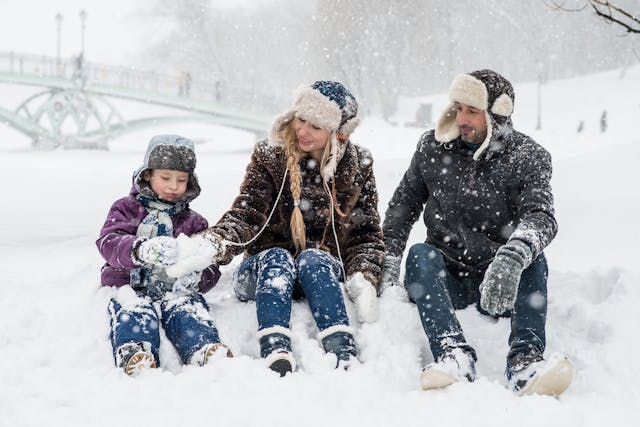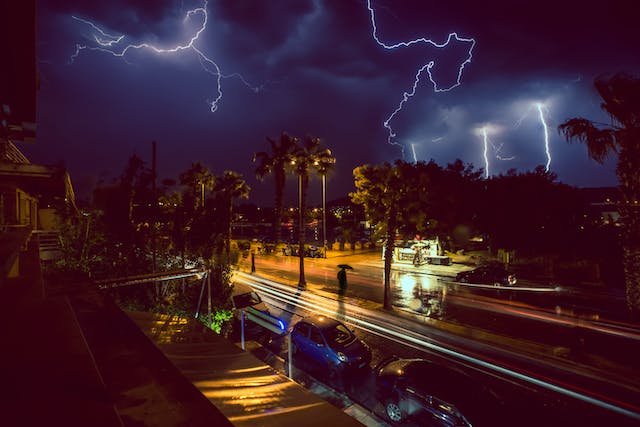Winter Weather Advisory issued for Northern Minnesota and Northwest Wisconsin | Stay Safe

Have you planned to travel in winter to Northern Minnesota and Northwest Wisconsin? To travel and stay safe you must be informed about Winter weather advisory issued for northern Minnesota and northwest Wisconsin. Before taking any such decision, you have to follow some guidelines to travel and stay safely in the area. Now we are going to delve into some important guidance to make your journey safer.
Importance of Weather Updates:
Most people worldwide are curious to know weather updates from various sources like weather forecasting channels, newspapers and different online platforms. It is required for those having schedules to go far away from the base location or to a particular zone where their program has already settled, or the location they are presently living. This weather forecast may be helpful for their reason(s) or any unknown situation that may come in future.
Different Seasons and Roles in Human Lives:
The revolving earth defines various seasons location-wise and completely depends on the sunlight that falls throughout the year. Some regions on the globe are lighted up perpendicularly and some other parts of the earth accept the sun’s light through slant rays.
People can feel completely six different seasons in some particular areas of the world. Those are Summer, Monsoon, Autumn, Pre-winter, Winter, and Spring. Each of the seasons has some pros and cons. Some seasons and their changes can create so many problems concerning the survival of all types of animals including human beings.
Winter weather advisory issued for northern Minnesota and northwest Wisconsin for the residents and travellers:
Let us consider problems for the residents of northern Minnesota and northwest Wisconsin in the winter season. Most of the time, the winter tightens its grip on the Midwest. The residents of northern Minnesota and northwest Wisconsin are bracing for yet another round of severe winter weather. A weather advisory has been issued the winter weather forecast for these areas. They have given the signals of challenging days ahead for local people and the travellers also. They have mentioned a series of weather warnings across the region including snowstorm warnings in south central Minnesota. Moreover, they highlighted winter storm warnings in west central Minnesota for the board impacts of the powerful weather system.
The Seasonal Changes: Various Impacts on Daily Lives
Apart from the Winter weather advisory issued for northern Minnesota and northwest Wisconsin, there are various impacts due to any of the seasonal changes depicted below.
- Any natural calamity affects our daily lifestyle and future expectations. We cannot predict the next conditions that may happen in the next coming days.
- The seasonal changes and their impacts on the lives of human beings drastically affect all future expectations and daily lives.
- A winter storm across an area sets the stage for considerable blowing snow and whiteout conditions. These conditions are most likely in areas with significant snowpack and can make travel hazardous in some regions.
- The high winds may result in numerous road closures and significantly disrupting travel and daily activities.
- The situation remains somewhat uncertain due to the varying snowpack conditions.
- The probable escalation to Blizzard Warnings may be the conditions deteriorate beyond current expectations. In that case, we will not be able to predict what the situation may be in the next period.
- Thunderstorms and heavy rainfall may adversely affect our daily lives and ruin the expectation of travel.

Preparation for Difficult Weather Conditions:
Keeping in mind all the warnings and difficulties in severe weather conditions, we must take some safety measures and obey some travel tips. It is most important for residents and travellers in light of the warnings in the affected areas to prepare for difficult conditions.
Some safety measures and travel tips are to be considered before planning to go beyond the range. These are including
Keep updated reports at all times:
Put your eye and set your mind on the latest weather updates and road conditions. Always try to use weather apps, official social media channels, and local news broadcasts for real-time updation.
Carry essential emergency kits:
We must ensure to equip the vehicle with emergency kits containing first-aid kits and essential medicines, sufficient water, dry foods, blankets, a flashlight and other essentials.
Stay away from travel:
During the advisory period, try to stay away from travel. If there is no situation to avoid it, inform someone about the details of your destination, route, arrival time and all other necessary information.
Obey the rules while driving:
If you intend to travel by road, limit the speed of your vehicle and keep a safe distance from other vehicles. If required, use a headlight to enhance the visibility.
Stay safe at the destination:
Be prepared for possible power outages by having supplies of batteries, battery power radio, and sufficient food and water on hand.
Different Types of Weather Conditions and Their Effects:
Heavy Rainfall:
The potential consequences of heavy rainfall may cause flooding that includes risk to human life and animals. It can damage buildings and infrastructures. Moreover, there may be a loss of crops and livestock. Additionally, landslides may happen. It can threaten animal life, and communications disrupt the transport system, power failure etc.
Huge Snowfall or Snowstorm:
The most common snow-related injuries may happen due to heavy snowfall. The cold temperatures for heavy snowstorms pose the risk of hypothermia and frostbite.
Winter Storm:
It creates a higher risk of car accidents, frostbite, heart attacks from overexertion, hypothermia etc. It can bring extreme cold, snow, freezing rain, high wind and ice.
Thunderstorm in Monsoon:
It may be small but every thunderstorm produces lightning that kills people every year. Heavy rain from this calamity can lead to flash flooding. Strong winds may happen due to some thunderstorms
Spring Storm:
In severe spring weather, thunderstorms can bring lightning, tornadoes and flooding. Lightning strikes in a dry area may cause fire. Snowmelt and heavy rain can produce large amounts of water runoff in a short time. Then it may result in a flood.
Travel Tips and Safety Measures:
Thinking about the difficulties in adverse weather conditions, we must take some safety measures and obey some travel tips. Travellers must think in light of the warnings in the affected areas to prepare for difficult conditions.
Some safety measures and travel tips are to be considered before planning to travel beyond the regions from the base location. These are including
- Keep updated reports at all times on the latest weather updates and road conditions from various weather apps, official social media channels, and local news broadcasts for real-time updation.
- Carry essential emergency kits with vehicles including emergency kits containing first-aid kits and essential medicines, sufficient water, dry foods, blankets, a flashlight and other essentials.
- Try to stay away from travel. Otherwise, inform someone about the details of your destination, route, arrival time and all other necessary information.
- Obey the traffic rules while travelling by road. Limit the speed of your vehicle and keep a safe distance from other vehicles. If required, use a headlight to enhance the visibility.
- Stay safe after reaching the destination and with possible power outages by having supplies of batteries, battery power radio, and sufficient food and water on hand.
Safety is the top priority to avoid any hazardous conditions. Hence we have to adhere to the safety rules while travelling.
Takeaways:
Winter weather advisory issued for northern Minnesota and northwest Wisconsin acts as a warning about the unpredictable nature of winter and how it can ruin lives. In the adverse conditions of winter weather, residents can navigate the challenges more effectively by taking preemptive measures and adhering to safety guidelines.
Trying to obey the safety rules for oneself and others must be the top priority. The importance of staying informed and the preparation taken accordingly may define a comfortable and safe journey. It will not be a matter of whatever this winter weather system may bring.
FAQs:
What’s the average temperature of Wisconsin in winter?
The average temperature of Wisconsin in winter is around 20 ℉ or -13℃ but may be dropped down below 0℉ or -18℃.
What are the months of winter in Wisconsin?
December, January and February are the months of winter in Wisconsin.
What are the coldest states in US?
Alaska, Minnesota, North Dakota, Montana, Wisconsin, Wyoming, Michigan, Maine, Vermont, and Idaho are the coldest states in the US.



